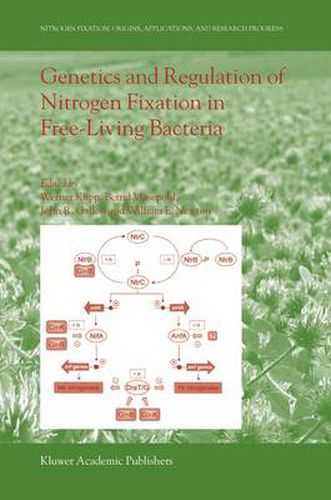Readings Newsletter
Become a Readings Member to make your shopping experience even easier.
Sign in or sign up for free!
You’re not far away from qualifying for FREE standard shipping within Australia
You’ve qualified for FREE standard shipping within Australia
The cart is loading…






This title is printed to order. This book may have been self-published. If so, we cannot guarantee the quality of the content. In the main most books will have gone through the editing process however some may not. We therefore suggest that you be aware of this before ordering this book. If in doubt check either the author or publisher’s details as we are unable to accept any returns unless they are faulty. Please contact us if you have any questions.
This book provides a comprehensive and detailed source of information on the genetic and regulatory aspects of biological nitrogen fixation in free-living (non-symbiotic) prokaryotes. Biological nitrogen fixation is represented in a diverse range of microorganisms, among which Klebsiella pneumoniae serves as a paradigm for the genetic analysis of diazotrophy, which is the ability to grow with N as sole nitrogen source. The volume uses two major complementary approaches to the subject matter. The initial chapters use an organismic-based approach by concentrating on the well-characterized diazotrophic proteobacteria, cyanobacteria, Gram-positive clostridia, and Archea. The later chapters use a comparative process-based approach and serve as overviews dealing with different regulatory aspects, electron transport to nitrogenase, and molybdenum metabolism, across the range of organisms. Whenever appropriate, historical aspects and agricultural and ecological impacts have been taken into consideration. Each chapter contains an extensive list of references. This book is the self-contained second volume of a comprehensive seven-volume series. No other available work provides the up-to-date and in-depth coverage of this series and this volume. This book is intended to serve as an indispensable reference work for all scientists working in this and closely related fields, to assist students to enter this challenging area of research, and to provide science administrators easy access to vital relevant information.
$9.00 standard shipping within Australia
FREE standard shipping within Australia for orders over $100.00
Express & International shipping calculated at checkout
This title is printed to order. This book may have been self-published. If so, we cannot guarantee the quality of the content. In the main most books will have gone through the editing process however some may not. We therefore suggest that you be aware of this before ordering this book. If in doubt check either the author or publisher’s details as we are unable to accept any returns unless they are faulty. Please contact us if you have any questions.
This book provides a comprehensive and detailed source of information on the genetic and regulatory aspects of biological nitrogen fixation in free-living (non-symbiotic) prokaryotes. Biological nitrogen fixation is represented in a diverse range of microorganisms, among which Klebsiella pneumoniae serves as a paradigm for the genetic analysis of diazotrophy, which is the ability to grow with N as sole nitrogen source. The volume uses two major complementary approaches to the subject matter. The initial chapters use an organismic-based approach by concentrating on the well-characterized diazotrophic proteobacteria, cyanobacteria, Gram-positive clostridia, and Archea. The later chapters use a comparative process-based approach and serve as overviews dealing with different regulatory aspects, electron transport to nitrogenase, and molybdenum metabolism, across the range of organisms. Whenever appropriate, historical aspects and agricultural and ecological impacts have been taken into consideration. Each chapter contains an extensive list of references. This book is the self-contained second volume of a comprehensive seven-volume series. No other available work provides the up-to-date and in-depth coverage of this series and this volume. This book is intended to serve as an indispensable reference work for all scientists working in this and closely related fields, to assist students to enter this challenging area of research, and to provide science administrators easy access to vital relevant information.